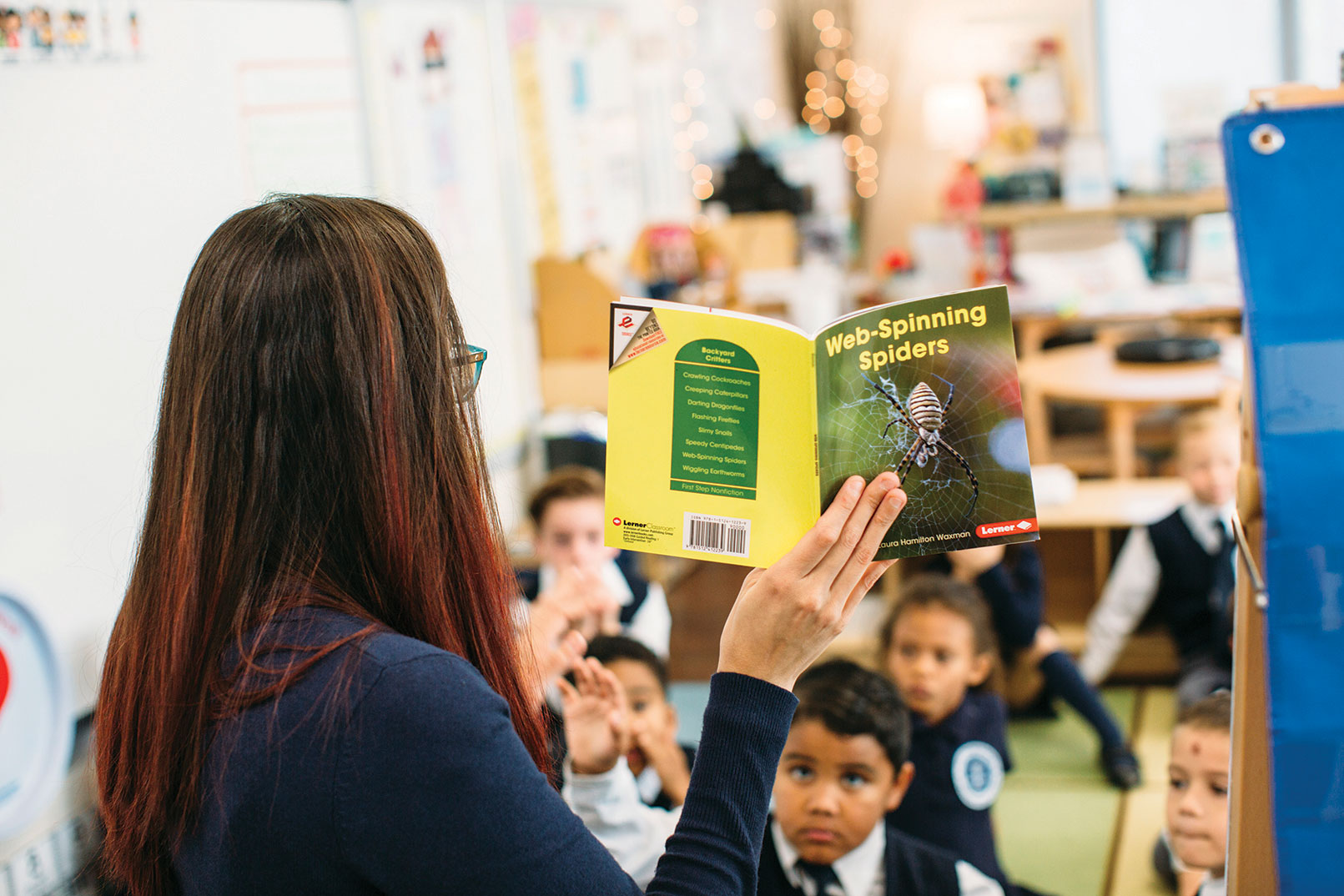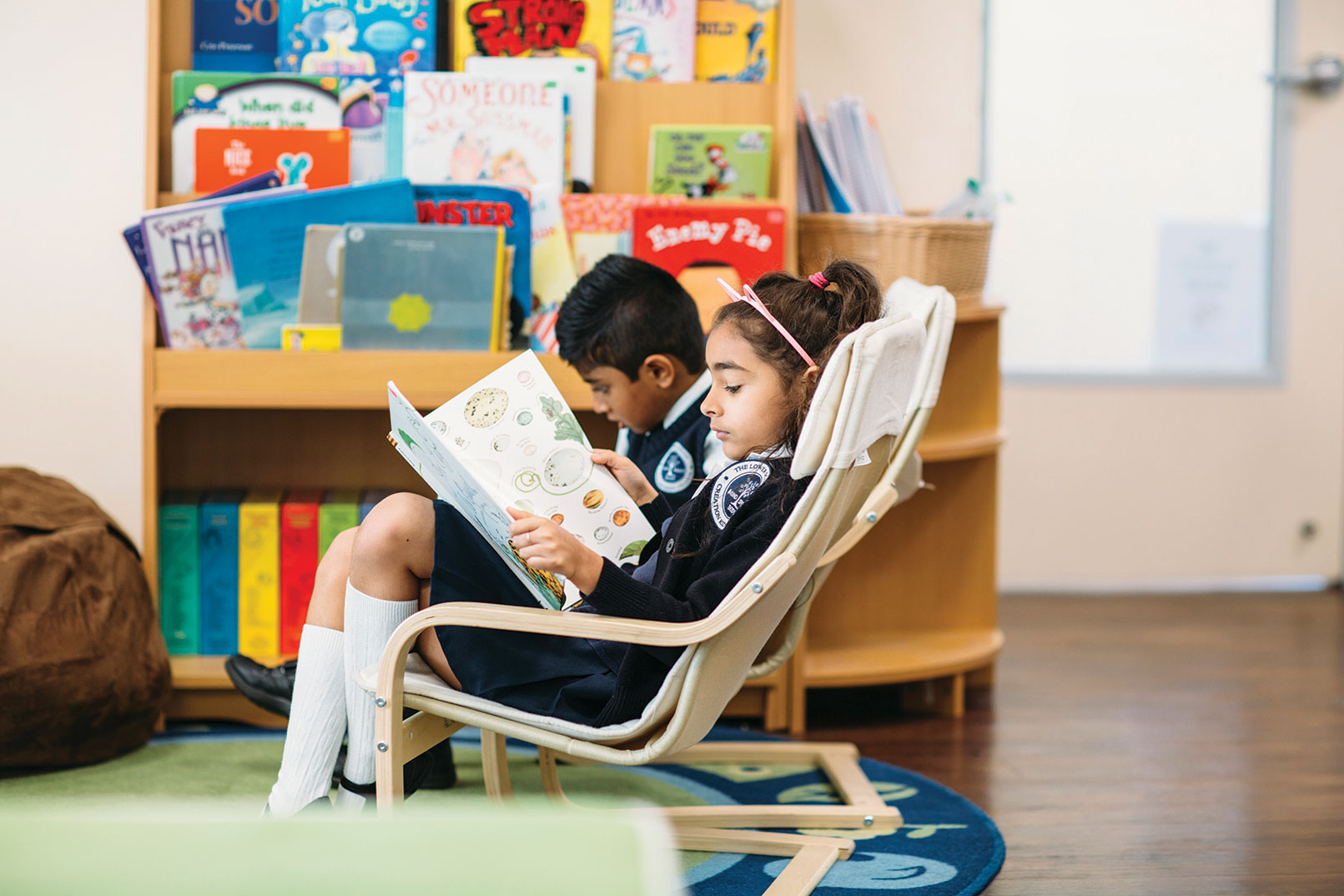

The Foundation is working with Creation Village Preparatory School in Celebration, Florida (banner photo and two photos above), to fully and creatively implement our Instructional Framework for 21st-century Educators. The school will serve as a model and demonstration site as we expand use of the Framework.
Our work with faith-based schools illuminated a challenge faced by education systems nationwide: Discrepancies among K-8 schools, standards and expectations meant that students were reaching high school with varying levels of readiness, creating pain points for students, parents, teachers and administrators alike.
We had an idea to address this and have spent the past six years developing the Instructional Framework for 21st-century Educators — a tool designed to support teachers and schools in delivering quality and consistent instruction for students. Reflecting Common Core standards and integrating recommendations of the Partnership for 21st Century Skills, the Instructional Framework is a research-based scope and sequence for teaching English/language arts literacy standards from kindergarten through eighth grade.
In 2014, we conducted a two-year pilot at an SDA K-8 school in Hyattsville, Maryland. Then in 2017, we began partnering with Creation Village Preparatory School (CVPS), a faith-based school in Celebration, Florida, to fully weave the Instructional Framework into the school’s culture and classrooms.
Meet Gemma Wise-Beaumont, a former second-grade teacher at CVPS who transitioned into the role of Instructional Framework Coordinator this past year. Ms. Wise-Beaumont first learned about the tool in a training session with Ginger Slaughter, our Senior Manager, Instructional Development — lead author of the tool and former teacher herself.
While focused on English/language arts, the Instructional Framework’s examples and applications of best teaching practices prepare students for greater success across all content areas in high school and beyond — bridging subjects as well as the classroom and the real world.
“My second-grade students learned about building communities. We first observed ants in the classroom building tunnels and working together, and then we read books to compare and contrast ants with humans,” says Ms. Wise-Beaumont. “The students went from comprehending the definition of a community to making the connection that we, as humans, live and operate in communities just like these insects do.”
The Instructional Framework didn’t simply hand a curriculum to Ms. Wise-Beaumont. It guided her as she created these lesson plans from scratch.
“The framework provides structure where it’s needed while also providing ample opportunities for teachers to take ideas and make them their own,” says Ms. Slaughter. “Time and time again, in Gemma’s case and with many others, we see teachers thrive when they’re given the chance to be creative — and when they thrive, their students thrive.”
Ms. Wise-Beaumont says she leaned on Ms. Slaughter throughout her first year, but in her second year, she felt more confident — strategizing and exploring new approaches both on her own and in tandem with Ms. Slaughter.
“I saw so many students experience ‘aha’ moments,” says Ms. Wise-Beaumont. “Not only were they understanding the content, they knew why they needed to learn it.”
And this, Ms. Slaughter says, is one primary aim for the framework. “An abundance of research indicates that when students are told why they are learning skills and how they will use them in their personal lives, they are more invested in learning.”
Ms. Wise-Beaumont adds, “Once this all clicks and you see the big picture, this is the only way you want to teach.”
As the Foundation’s partnership with CVPS has advanced, this work created a need for someone onsite to guide and support it — and Ms. Wise- Beaumont was both passionate and prepared to take it on: “The framework is growing, and I want to grow with it.”
The Foundation will continue to support CVPS as the school further implements and innovates with the Instructional Framework. And in turn, CVPS will serve as our model and demonstration site as the tool is made available to other educators, allowing them to see these best practices in action and leverage them in their own schools.

